- Home
- Diane Fanning
Under the Knife Page 9
Under the Knife Read online
Page 9
That hope for the relationship and the repayment, though, diminished with each passing day. Dean stopped paying on his loan and Greg was outraged. In disgust, he stopped responding when asked to provide wake-up service.
Dean struggled to meet his own basic needs. There was simply not enough income rolling in for him to survive the added expense of a Manhattan apartment, no matter how good a bargain he had. His solution was to attempt to rent the house in Newark. He found an interested couple, thinking his income shortfall was solved. But driving to Forest Hills in their rented moving van, they got lost and meandered through some of the grittier Newark neighborhoods. After that eye-opening experience, the couple reneged on their agreement.
Eventually, Dean stopped showing up for work entirely. His alarmed receptionist notified Greg. After calling Dean’s apartment numerous times without response, Greg went to 44th Street and buzzed up to Dean. Still no response, day after day.
After nearly a week, Greg was frantic. He contacted a doctor he knew socially and convinced him to intervene. The doctor left a message on Dean’s answering machine: “Dean, if you do not let us into the apartment, I’ll call the police. They’ll force their way in.”
The next time Greg went to the apartment, Dean responded to the buzzer. Greg went in to find the apartment looking like a disaster zone. Dean had been inside all along, buzzed out on a drug binge.
MEANWHILE, DR. LAURIE POLIS’ STAR WAS RISING HIGH IN THE Manhattan horizon. Her business, now named the SoHo Skin and Laser Dermatology Group, flourished. The location of her office complex was ideal—SoHo had become home to the most prestigious spas in the world, and Dr. Polis stepped into that arena with the opening of her Mezzanine Spa in 2000.
She reigned over this world, with the sort of cachet that drew a long list of celebrity clients. Dr. Polis was named one of the seven most sought-after dermatologists in New York City.
The glamorous spa she created was an oasis of delight. Walls with Japanese grass–infused wallpaper, other walls of rice paper, bamboo floors, a three-story water sculpture and a lounge stocked with wasabi snacks and fortune cookies formed an exquisite backdrop for her services. A dozen doctors now worked at her facility. In addition to a medical practice in cosmetic, clinical and surgical dermatology, she offered a Western menu featuring cutting-edge skin-care treatments based on the latest science and tailored to the needs of each individual, as well as an Eastern menu offering Ayuveda from India, a philosophy-based holistic approach to health and healing that utilized herbs and meditation; acupressure; and Chinese herbal facials and relaxation therapies. Dr. Polis oversaw the most comprehensive medical day spa in the country.
One day, she flipped through a new issue of New York magazine. Her fingers froze in disbelief and dismay. Once again she stared at an ad for SkinOvations. Dean was still at it, in a new office, but still offering the same services, presented with the same marketing approach.
She felt helpless and frustrated. Why wasn’t he in jail?
DEAN’S THREE YEARS PROBATION FOR FORGING PRESCRIPTIONS expired in January 2002. He was now free and clear of the criminal courts and the justice system. Or so he thought.
Authorities, however, had other ideas. On February 2, Daniel Kelleher, director of investigations for the state department of education, sent a second undercover officer, Ariana Miller, to visit Dean in his offices. He hoped that this time they would get sufficient evidence to convince the attorney general’s office to move forward with the prosecution of Dean Faiello.
Dean offered to remove blood vessels from Ariana’s leg and diagnosed her skin lesion as benign. He told her he could remove both with a laser, and that she would not feel any pain because he would inject her with a local anesthetic before starting the procedure. When she questioned his credentials, he assured her that he was a doctor.
Tonya Holder, yet another investigator, entered Dean’s office on March 22. He also diagnosed her skin lesions as benign, again offering to remove them with a laser after injecting the area with anesthetic. He gave her the same assurances that he was in fact medically qualified to perform the procedure.
The investigators prepared a second round of reports and filed them with the office of Attorney General Eliot Spitzer in May, then sat back and waited for him to take action and put Dean out of business.
That summer, Dean moved the offices of SkinOvations to a new space at 117 East 18th Street. This Gramercy Park–area property was owned by his personal physician, Dr. Lawrence Fontana. Dean worked there under the supervision of a doctor in the neighboring suite, Dr. Frank Spinelli. Spinelli provided comprehensive adult primary care with a focus on gay health. As a specialist in treating HIV-positive patients, he was in great demand in the gay community. His clientele also appreciated him for his good looks. The New York Blade named him one of the two hottest doctors in town. “Those dark, brooding eyes. That curly hair. That muscled body. Oh yeah, he’s also a great doctor,” the Manhattan gay newspaper wrote.
Despite the fresh start in an office complex with a respected doctor, Dean’s behavior continued to deteriorate. He never seemed to sleep. He spent his nights reading medical websites instead. His mood swings were more sudden than an earthquake and more extreme than a category-five hurricane.
Greg knew that drug use, complicated by lack of sleep, provided the fuel for Dean’s erratic and bizarre behavior. Dean, though, tried to conceal his habit. Greg bumped into confirmation wherever he turned—a Pyrex plate with a straw in it stuffed in a linen closet, a Stadol inhaler shoved deep down in the trash.
Greg still tried to engage him in conversation about the root of his problems, but once again made little or no progress. He consulted with experts at rehab centers. Greg wanted desperately to save Dean from himself. He also had the growing suspicion that Dean was courting trouble by passing himself off as a physician. He saw more and more mail coming in addressed to Dr. Dean Faiello, M.D.
One evening, that worry received confirmation. Greg dropped by Dean’s office and together they walked out to the parking garage. A worker there said, “Goodnight, Dr. Faiello.”
On the way home, Greg asked, “Dean, you don’t tell people you’re a doctor, do you?”
“No, of course not,” Dean said.
“You know how much trouble you can get into if you do, don’t you?”
Dean waved him off, dismissing his concern. Dean did not feel it was important. But he should have. While he made little of Greg’s worries, a dark cloud churned over Dean’s head. Lightning poised, ready to strike. The attorney general’s office was receiving and responding to reports from the state department of education. Investigators from that office now dogged Dean’s every step.
CHAPTER SIXTEEN
DEAN AND HIS BUSINESS ATTRACTED MORE THAN JUST AN official investigation. Two tenacious journalists now shadowed him, preparing to con the con.
Barbara Nevins Taylor, an investigative reporter with Channel 9 News, was the first to pick up the scent of the developing story. A native New Yorker, Barbara was born and raised in Queens. She attended New York City’s Performing Arts High School—later named LaGuardia High School. She majored in sociology at Queens College, the City University of New York. By the time she graduated, Barbara planned to enter the world of journalism, following in the footsteps of her father, Zeke Segal, national assignment editor and southern bureau chief with CBS News.
Like many aspiring reporters, Barbara embarked on a journey of voluntary exile, polishing her craft in smaller media markets. She started as a reporter for WHNT, a television station in Huntsville, Alabama. She then worked as an anchor and reporter at WKYT in Lexington, Kentucky. She stepped into a substantially larger market when she snagged a reporter’s position at a local television station in Atlanta, Georgia.
During this stop in her nomadic existence, Barbara met Nick Taylor, a long-time print journalist working in television news as a political reporter. Nick left broadcasting to take a position with the Jimmy Carter campaign and th
e two saw little of each other. But after Carter’s successful election, Nick and Barbara started dating. Barbara was now the chief political correspondent at WAGA in Atlanta.
Nick and Barbara lived together for five and a half years and were then married in 1984. At last, Barbara was able to return home to New York—her journeyman dues paid—when she accepted a reporting job at WCBS.
Nick thrived in New York. He was elected president of the Authors Guild and successfully authored twelve non-fiction books including one, Laser: The Inventor, the Nobel Laureate, and the Thirty-Year Patent War, about the technology that played such a pivotal role in Dean Faiello’s professional life. Together, Nick and Barbara traveled, sailed and tackled the greatest challenges of the boomer generation: caring for the lives, bodies and minds of their elderly parents, and watching as they shrunk before their eyes.
In 1992, Barbara left WCBS, taking a hiatus from the frenetic pace of television journalism and devoting her attention to her foster child. When she returned to media work in 1994, she found her mission as an investigative reporter at the New York–based, Fox-owned television station, Channel 9.
She tackled an FBI sting operation gone bad, stolen identity stories, and gun-related crime. She exposed a green card scam that bilked immigrants out of nearly a million dollars. She uncovered an unscrupulous landlord—one who didn’t provide heat or hot water and refused to repair collapsed ceilings, giant holes in the floors, leaky roofs and broken toilets. She was there with a cameraman, bringing viewers the image of this man as he was handcuffed and carted off to jail. She unraveled the flim-flam operations of unscrupulous tax preparers, fly-by-night contractors, towing companies who stole cars and phony mortgage companies who stole houses.
Through all this work, the praise piled high for Barbara Nevins Taylor. She earned thirteen Emmys, a “Laurel” from the Columbia Journalism Review and other honors from the Associated Press, the Society of Professional Journalists, the Deadline Club, The Newswomen’s Club of New York, the New Jersey Broadcasters Association and the New York Society of the Silurians.
When Barbara focused her talents and energies on the cosmetic surgery industry, she stepped onto a path that would lead her to Dean Faiello.
Initially, her story focused on three physicians—one in New Jersey and two in Queens—who were the subject of repeated complaints from viewers whose plastic surgeries were botched. The most egregious offender was Dr. Jose Arely Lopez. She looked into his practice at a time when he was about to lose his license for the death of one of his patients. Wanda Nunez, a young mother, died on the operating table because of the anesthesia Dr. Lopez administered during a tummy tuck procedure.
Women who survived his surgeries told tales of horrible pain and disfigurement. Carol Brown went to Dr. Lopez’s New Jersey office for liposuction on her stomach and legs. After the procedure, she had open lacerations on her torso. Lopez told her nothing was wrong—her wounds would heal and disappear.
Several months later, when she expressed her dissatisfaction again, Lopez recommended corrective laser surgery to remove the excessive scarring. Carol underwent the procedure with Diana, Dr. Lopez’s wife, assisting him in surgery. Diana had no medical training at all.
Afterwards, the burning pain Carol felt was intense, and the disfigurement was not alleviated—if anything, it worsened. When she sought a second opinion, Carol was told that further treatment was useless, and she was scarred for life.
Maria Linarez visited Dr. Lopez for liposuction, too. He performed the procedure on her back—once again with the assistance of his unschooled wife. The surgery left a legacy of scars and pain, both physical and mental. Maria believed she looked like a monster.
When authorities revoked his medical credentials, Lopez closed his existing office and calmly set up another on Fifth Avenue in Manhattan. Barbara made repeated efforts to send in an undercover operative to catch Lopez in the act, but always failed to get an appointment. Then, she caught on to the process. All prospective patients were screened by Lopez’s brother—if you were not a Latino, you didn’t get in to see him.
Barbara lined up the right bait and the trap was set. The television station offered the attorney general’s office the opportunity to provide an undercover investigator to accompany them on the appointment, but they declined.
Channel 9’s hidden camera caught the professionally defrocked Dr. Lopez doling out medical advice and offering to perform procedures to make the phony patient “more beautiful.” Now they had proof that Lopez was violating the law, but it seemed like the authorities were never going to make a move. On the day the story was scheduled to air, Barbara and her cameraman barged into Dr. Lopez’s offices. They caught him on tape in the middle of surgery with his hands in a patient’s body.
They called the police. Dr. Lopez raced out a side door and into the street. The crew followed him outside where, to Barbara’s amazement, Lopez denied being the person performing the surgery they just witnessed and recorded.
Channel 9 aired the story that night as Dr. Lopez fled to Florida. There, he set up a new practice and got busy risking the lives of more people. The attorney general’s office moved swiftly when they learned of his location, and extradited him back to New York. Lopez pled guilty to practicing medicine without a license and received a sentence of 2 to 6 years in the New York state prison system.
While covering the Lopez story, Barbara expanded her focus to encompass the cosmetic surgery industry as a whole, including the proliferation of laser use by people outside of the medical profession. The pieces produced and aired as a result of these investigations prompted a patient of Dean Faiello to call the station’s hot line, claiming that Dean told his clients that he was a physician. Here was an individual who was not just using laser in possibly illegal ways, but who was also pretending to be a doctor. Barbara believed this situation posed a huge threat to the public. She placed a call to Dr. Laurie Polis, who filled her in on Dean Faiello’s history.
In August 2002, Linda Sachs, a Channel 9 producer, made an appointment with the imposter. Using a hidden camera, she and the videographer caught Dean passing himself off as a physician. Barbara knew she had a hot story now. It was time to dig deeper.
CHAPTER SEVENTEEN
ANOTHER DOGGED MEMBER OF THE MEDIA ENTERED THE fray—Jeane MacIntosh of the New York Post. She moved in to research and write the story after getting a tip from a New York Times reporter who had interviewed Dr. Polis. The writer submitted a story about bogus skin care doctors that the Times turned down for publication because it was too sensational. She provided several names to Jeane, who chose to pursue information about one of the doctors in particular—Dean Faiello—when she learned he was under investigation by the Office of Professional Discipline.
Jeane was an Army brat born on May 21, 1961, in Munich, Germany. She grew up in Michigan and graduated from Miami University in Oxford, Ohio, with a degree in English in 1983. Like many English majors before her, she faced a limited number of options for employment and so she worked as a bartender for a while, much to her parents’ dismay. One of her customers at the bar was the manager of a Detroit-area chain of suburban newspapers. She asked him for a job, to get her parents off of her back. He hired her and Jeane started her career in journalism writing for the Northville Record and the Brighton Argus.
A few months later, she accepted a job with a “crappy little newspaper” in New Jersey, where she lasted for two weeks, then quit and moved to Boston. There, she wrote copy for a mutual fund group. In 1985, she returned to the newspaper business as a financial writer and business reporter for Women’s Wear Daily. She stuck with that employer for ten years.
Her next position was deputy editor of the New York Post’s Page Six, in 1995. As a contributor to the notorious and salacious gossip column, Jeane developed her contacts and learned to dish with the best. It was a glamorous job—nights of star-studded parties, days of celebrities whispering deep secrets in her ears.
The Post was part o
f Rupert Murdoch’s media empire. Jeane took advantage of one perk of working for that massive conglomerate—an exchange program that enables reporters to work for other publications in the group for a short time.
Jeane chose a newspaper in Australia, where she worked for four months. There, she hit it off with an Australian reporter. While they were involved, she thought the romance was the real thing. However, when she returned to the United States, the relationship died faster than it began. To the Australian, Jeane was only another conquest—a momentary fling with a woman from the States. The situation was far more serious for Jeane—both romantically and in the long term. Upon her return, she discovered that she was pregnant with his child. Jeane considered her options and told herself, “Hey, I’m 37 years old. How hard can this be?” She decided to raise the child as a single mother.
In March 1998, other gossip columnists reported that Jeane was six months pregnant with the child of another Rupert Murdoch employee. In response to questions, Jeane said, “I’m spawning a hybrid tabloid warrior.”
When Jean’s little girl was 6 months old, Tom Parker stepped back into her life. She’d known Tom in high school. She’d even attended his first wedding, telling herself that if he was ever available again, she would marry him. He was available now and the romance began.
Her personal life entered a gratifying phase, but professionally the going got rough. The destructive impact of her seemingly frivolous job hit hard in November 1999. Jeane reported on the life of talent agent Jay Moloney.
She wrote a piece about his cocaine addiction and how it drove him from a position running Paradise Music into a rehabilitation clinic. Within hours of the story’s release, the reverberations struck an already depressed Jay. He wrapped a belt around the shower nozzle and then around his neck, killing himself. Jay’s friend Dana Grachetto was more than happy to talk to the media, describing how he warned Jeane that if she published the story, it would push Jay over the edge.

 Death on the River
Death on the River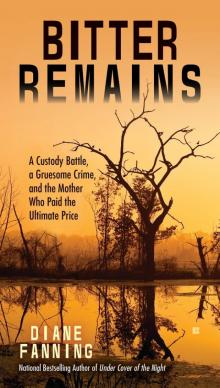 Bitter Remains
Bitter Remains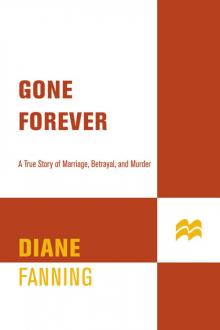 Gone Forever
Gone Forever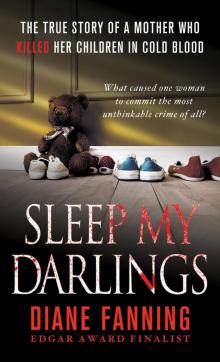 Sleep My Darlings
Sleep My Darlings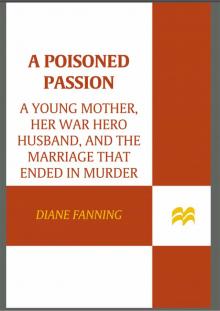 A Poisoned Passion
A Poisoned Passion Through the Window: The Terrifying True Story of Cross-Country Killer Tommy Lynn Sells (St. Martin's True Crime Library)
Through the Window: The Terrifying True Story of Cross-Country Killer Tommy Lynn Sells (St. Martin's True Crime Library) Chain Reaction
Chain Reaction Baby Be Mine
Baby Be Mine The Pastor's Wife
The Pastor's Wife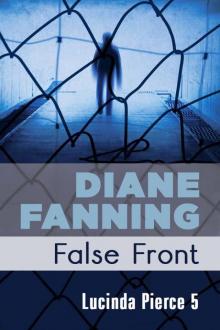 False Front (Lucinda Pierce)
False Front (Lucinda Pierce)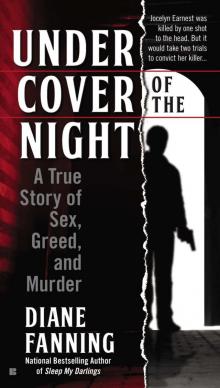 Under Cover of the Night
Under Cover of the Night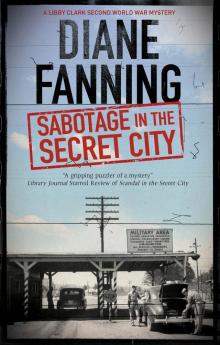 Sabotage in the Secret City
Sabotage in the Secret City Written in Blood
Written in Blood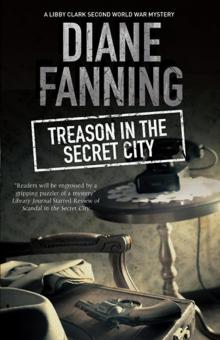 Treason in the Secret City
Treason in the Secret City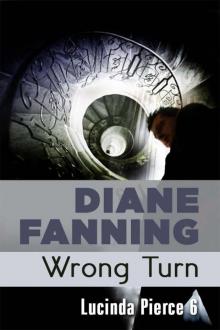 Wrong Turn
Wrong Turn Under the Knife
Under the Knife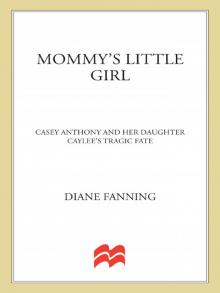 Mommy's Little Girl
Mommy's Little Girl Scandal in the Secret City
Scandal in the Secret City